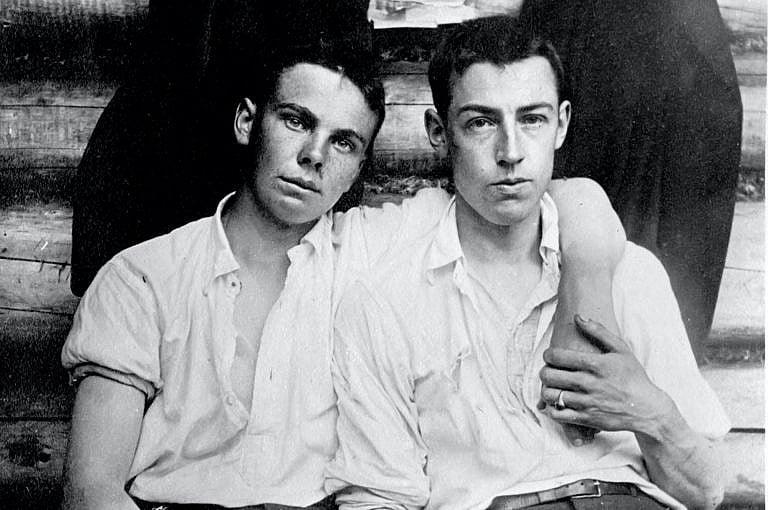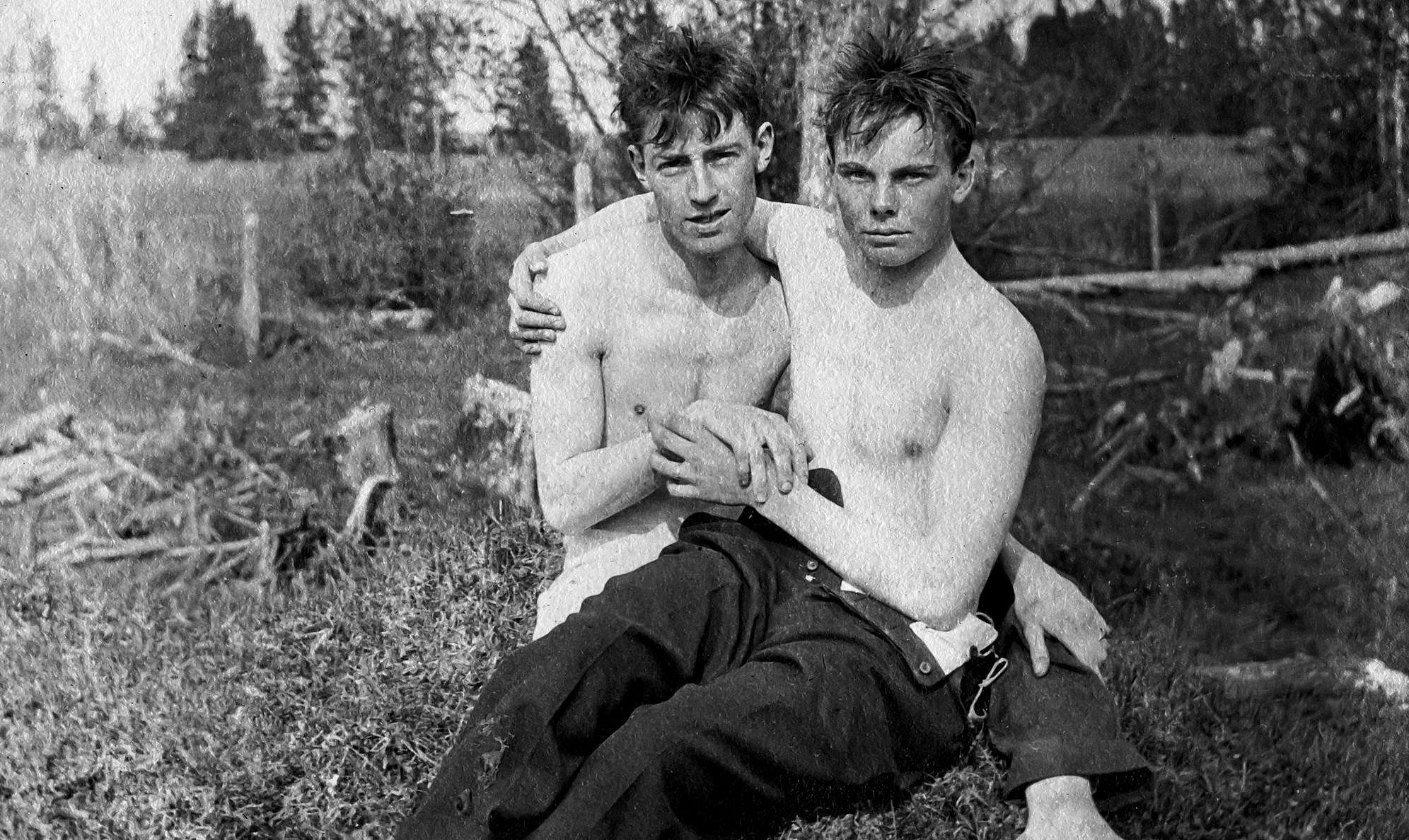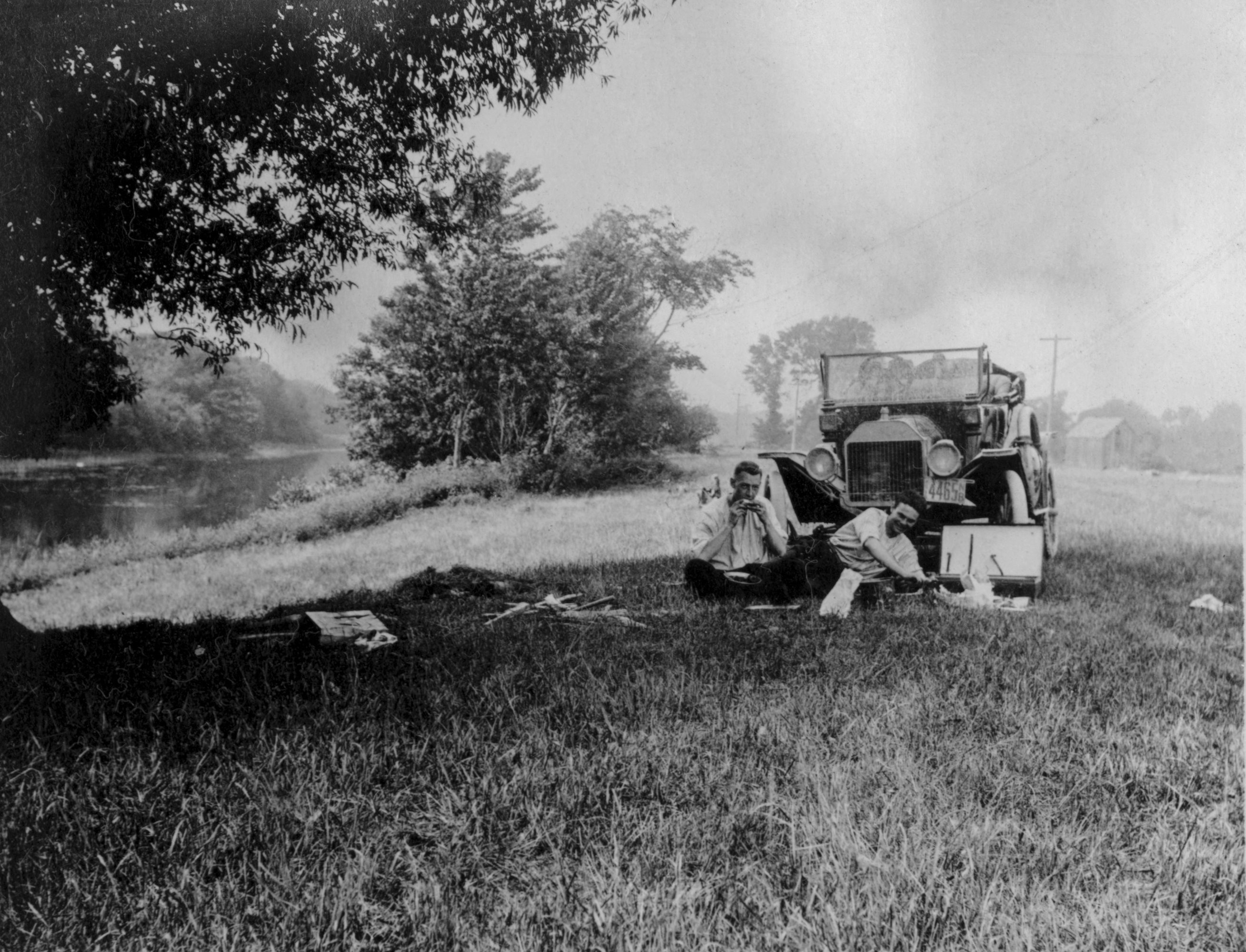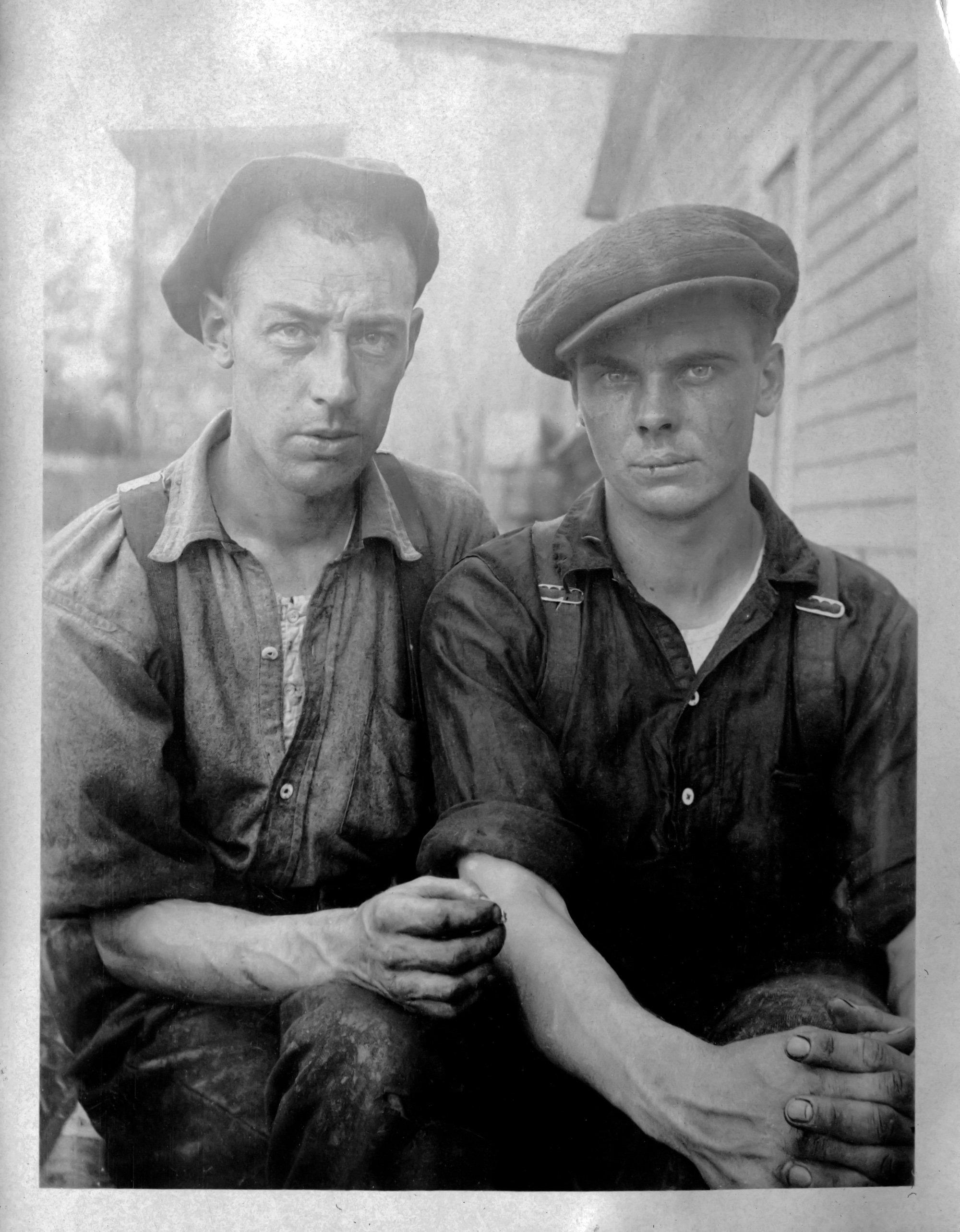Len and Cub: A secret love
Len Keith and Cub Coates fell for each other in early 20th-century New Brunswick, at a time and place where queer relationships were taboo. Their story was almost lost forever—until a collection of tender photographs brought their romance into the light.

Share
A lot of queer people think 2SLGBTQ+ history is limited to metropolitan areas like New York or San Francisco, Toronto or Montreal. I came of age in rural New Brunswick, where my lack of exposure to anything queer—especially queer history—led me to believe that those stories weren’t there. I’ve since learned how naive that notion is, and that queer history exists, in some form or another, in every community across Canada.
Growing up, I never saw myself represented in my surroundings. All I heard about gay people was that they were sissies, freaks, diseased, predatory. The last thing I wanted was to be queer. And yet I couldn’t hide it. I developed a deep-rooted self-hatred and internalized homophobia that took years to shake off. Even after coming out at age 16, I was still alone. I didn’t know it at the time, but this lack of representation created a void in my identity. Enduring homophobia without seeing queer love is an incredibly isolating experience.
In 2014, I was attending the New Brunswick College of Craft and Design and completing a summer internship at the Provincial Archives of New Brunswick. A colleague who knew about my interest in queer history introduced me to some photos donated by John Corey, an artist, community historian and general collector of things. His donation included a number of photo albums that had belonged to Leonard Olive Keith, an amateur photographer, entrepreneur and veteran of the First World War, affectionately known as “Len.” He’d grown up in Havelock, New Brunswick. Impossible to ignore among the hundreds of photos was the presence of Joseph Austin “Cub” Coates. Corey, whose father was a friend of Len’s, noted during the donation process that Len and Cub were “boyfriends.”

In 1918, Len was happy in Havelock, running his own garage and enjoying his time with Cub. In April, he received his call-up papers, and was forced to enlist. Cub was old enough to enlist on his own, but young enough to avoid conscription.

Two weeks after Len was drafted, Cub enlisted and followed Len to Saint-Jean-sur-Richelieu for training. They didn’t fight in any battles (the war was winding down by the time they arrived overseas) but they worked as engineers, doing cleanup and repairs.
I had 15 albums, a few thousand loose photos and a few dozen glass negatives. I began poring over them, searching for Len and Cub. I found photos of the men embracing in the wilds of New Brunswick, Cub with his hand curled around Len’s inner thigh, and the pair of them shirtless, sitting in each other’s laps with their pants undone, hands clasped, making eye contact with the camera. These photos brought me to tears. They transcended time and showed me a love like mine, shared by people like me, in the place where I lived, one hundred years ago. I saw myself in Len and Cub. It was an incredibly validating and exciting discovery for a young queer person like me. The photos were a testament to the often-touted phrase in queer circles: “We have always been here.” This time, “here” was the tiny, rural village of Havelock.

The boys began appearing in photos together in 1915, after Len returned from a stint at Tilton School in New Hampshire.
I became enamoured with the collection. In 2015, I founded the Queer Heritage Initiative of New Brunswick, or QHINB, a community archive that began as a cardboard box in my home office and is now a permanent collection at the provincial archives. Three years later I met Meredith J. Batt, a young queer archivist recently hired at the provincial archives, who is now the president of QHINB. The two of us were spurred on by our mentor, John Leroux, manager of collections and exhibitions at the Beaverbrook Art Gallery, who encouraged us to meet with Goose Lane Editions about developing a manuscript that would explore the lives of Len and Cub, and how their relationship unfolded in the time and place that it did. This is when the real research for our book Len & Cub: A Queer History began.
Len and Cub are a testament to the often-touted phrase “We have always been here.” This time, “here” was the tiny rural village of Havelock.
Meredith and I worked through the pandemic, meticulously viewing and reviewing the photos, looking for traces of the boys in Canadian census records, war records and local newspapers. We pieced together their lives: their travels, employment, military service, personalities. We also spent a lot of time researching cultural shifts and attitudes around sex, gender and same-sex experiences during the first half of the 20th century. To simply call Len and Cub “gay” and move on with it ignores a mountain of nuance around how they would have understood their relationship. What is undeniable is that their love, however they would have described it, is beautiful to see, and that we’re all lucky that these photos have survived as long as they have.
Now, more than ever, New Brunswick is ready to have conversations about the place of queer people in this province, our history, our lived realities and our future. Since the launch of our book this year, Meredith and I have received messages from folks across the country, queer and straight alike, who are taking heart in the boys’ story and in how they too can see themselves in Len and Cub. I’m proud that this little queer love story from rural New Brunswick has spread as far as it has, and that people find comfort in Len and Cub’s photos. They remind us all that same-sex love has always been a part of our country, that queer people have always existed and that we belong wherever we choose to call home.
***
Cub and Len resting in a hammock outside the Keith family home

Havelock, New Brunswick, circa 1915 to 1916
This is one of the earliest photos of the boys together. A second photo taken shortly after shows Cub and Len huddled together on the hammock lighting two cigarettes. Some of their later photos were taken with a self-timer, but it’s more likely that a friend or family member took this shot.
Len and Cub on an outing

Near Jemseg, New Brunswick, circa 1916
Len’s father, Hilyard Keith, had enough disposable income to buy the first automobile in Havelock— a Ford, which Len drove more than anyone else. The family also bought a Kodak camera in the early 1910s (Len’s images make up the bulk of the Keith family albums). Thanks to these purchases, the boys could travel out of town to be alone together and capture their adventures.
Len and Cub outside Len’s garage

Circa 1919
In 1931, Len was outed for his sexuality and driven out of town. By August of that year he had signed over control and ownership of his business to his sister, Lucy. We lose track of Len until his mother’s death in 1948, when her obituary notes that he is living in Longueuil, Quebec. Cub, meanwhile, continued to live in Havelock, seemingly untainted by the scandal. In 1940, he moved to Moncton to marry Rita Cameron, a nurse.
This article appears in print in the August 2022 issue of Maclean’s magazine. Subscribe to the monthly print magazine here, or buy the issue online here.
